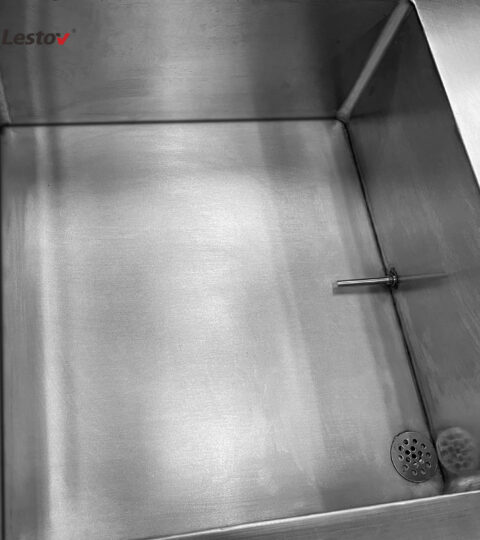In today's fiercely competitive catering industry, an efficient and stable fryer often determines the speed…

Valuable Cleaning Tips – Commercial Induction Deep Fryer
Few people can resist the smell of fried chicken emanating from KFC & MD stores, which has irresistible magic in guiding hunger. The alluring flavors of deep-fried food, which is crispy and retains its juices, are taking over every family table.
As a result, many restaurateurs, seeing the potential of deep-fried food in driving traffic, are planning to include it as a menu option. It’s not hard to explain the popularity of restaurant deep fryers on Google and Amazon.
While restaurateurs are happy to see increased foot traffic, deep fryer cleaning is a nuisance, whether cleaning restaurant fryer parts, changing cooking oil, or rusting frying screens.
Here’s a cleaning guide from the manufacturer of restaurant-deep fryers. If you are struggling with cleaning your restaurant’s deep fryer, this will help you.

Daily Cleaning of Restaurant Fryers
It sounds like a chore, but you have to make sure you clean your deep fryer every single day. Some oil stains or food residue can speed up the rusting process of the deep fryer. If you don’t want to get complaints about your food having a rusty smell, follow my advice.
You can keep the cooking oil in the deep fryer if it is covered with a cover. Some animals or dust will enter the frying tank while you are not paying attention, steal food or pollute the cooking oil, which does not meet the hygienic standard.
Some restaurateurs pour the cooking oil into jars to make cleaning the fryer easier. The screen at the bottom of the deep fryer is the hardest hit area for cleaning, as it picks up a lot of batters, food crumbs, and grease. Pour an appropriate amount of detergent into the cleaning pool to dilute with water, wipe off the large particle residue on the screen with a brush, soak in the cleaning pool for 15 minutes, and rinse with water.
I recommend buying a frying tank that is removable or has a drain valve for easy dumping or cleaning. Please don’t ignore every corner of the deep fryer, it is where oil stains hide. After cleaning, dry the frying tank.
The surface of the restaurant fryer needs to be wiped with a rag, and some picky customers will judge the hygiene of the restaurant from the fryer.
Clean after the oil change
If you don’t want to smell greasy in the new cooking oil, clean the fryer before changing the oil. Cooking oil that has been fried repeatedly will produce harmful substances, a burnt taste, and darken the color. If it is not cleaned, it will be mixed into the new cooking oil, speeding up the life of the cooking oil.
How to identify whether cooking oil needs to be replaced:
If you use your deep fryer a single day, I recommend changing the oil every two weeks. Please don’t dwell on the cost of changing the oil if you don’t want burnt chips or bad reviews from customers.
Odor:
If you smell a burnt smell in the cooking oil or see black fumes, you may need to change the cooking oil for your deep fryer.
Taste:
If you taste oily or burnt in the food you’ve already fried, you may need to change the cooking oil.
Color:
If the oil in the fryer has turned from light yellow to dark brown, you may need to replace it.
Professional overhaul
After using your deep fryer for a long time, you need to invite a maintenance worker to overhaul it, from the cooling fan to the heating core to the thermostat. A restaurant deep-fryer frying a batch of chips requires not only daily cleaning but an annual inspection by a maintainer.
Cooling Fan:
A component that determines how long a restaurant fryer will run. If a lot of waste heat accumulates inside the machine, it will speed up the service life of a restaurant fryer. Some oil, grease, or dust will be distributed on the fan blades, you need to wipe it off with a cotton swab or a damp rag.
Heating Coil:
A component that determines how much electricity a restaurant deep fryer uses. The coil provides a steady heat output for the deep fryer. The coil is made of copper wire, which will oxidize after long-term heating, which will affect the heat output.
Thermostat:
A component that determines the temperature of a restaurant deep fryer. The thermostat is precise in controlling the heating temperature of the fryer, and some thermostats have a temperature difference of ± 1 °C. You can use a thermometer to test that the oil temperature matches the number on the thermostat.











Questo articolo ha 0 commenti